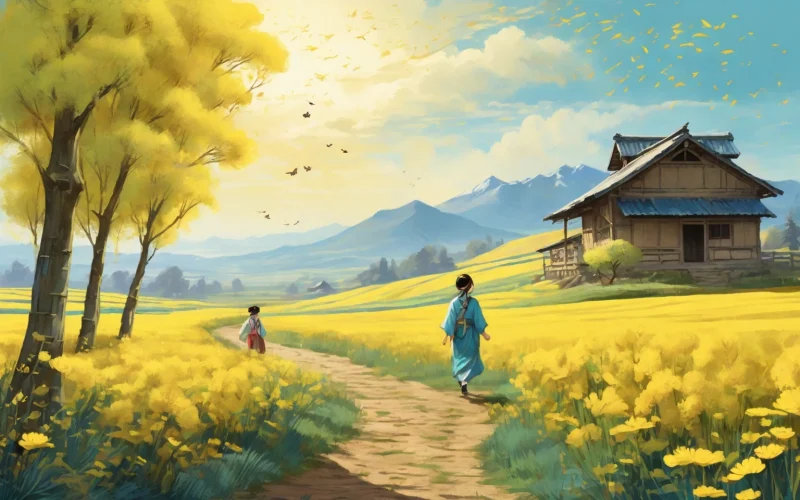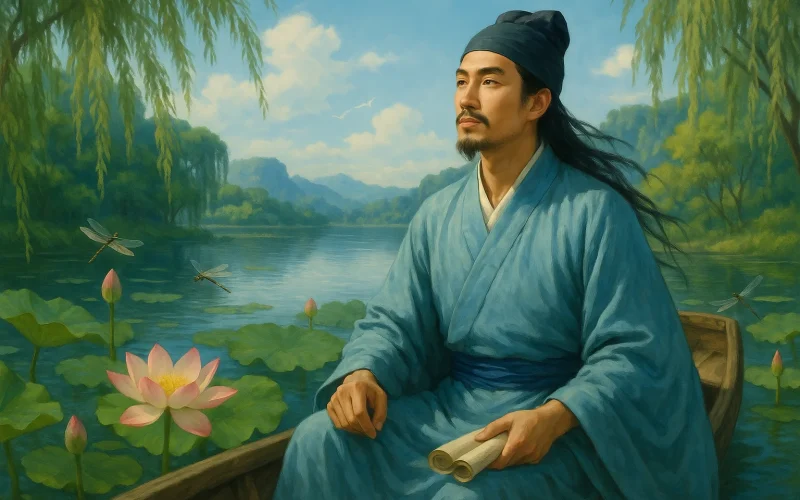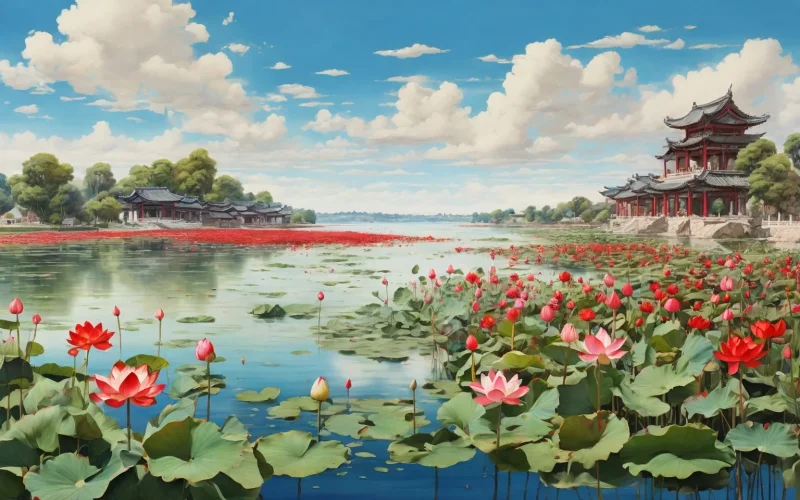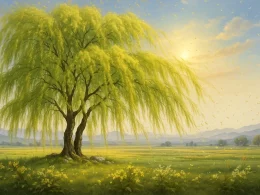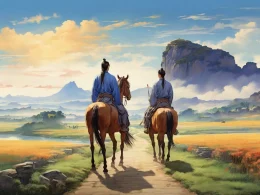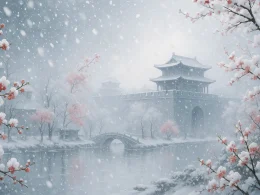Through sparse fences, a path runs deep and still,
New leaves blush green—not yet a shade to fill.
Children chase yellow butterflies in haste,
Lost in rape flowers—no trace to retrace.
Original Poem
「宿新市徐公店 · 其二」
杨万里
篱落疏疏一径深,树头新绿未成阴。
儿童急走追黄蝶,飞入菜花无处寻。
Interpretation
Composed in 1192 during Yang Wanli's tenure as Jiangdong Transport Deputy, this quatrain captures a fleeting moment between late spring and early summer in rural Zhejiang. Written during a stopover in Xinshi (modern Deqing), the poem crystallizes the "Chengzhai Style" aesthetic—finding profundity in rustic simplicity through keen observation and unadorned language.
First Couplet: "篱落疏疏一径深,树头新绿未成阴。"
Lí luò shūshū yī jìng shēn, shù tóu xīn lǜ wèi chéng yīn.
A sparse fence lines the path that stretches deep,
new leaves on branches—still too young to shade.
The opening establishes spatial harmony: the "sparse fence" and "deep path" frame vertical and horizontal dimensions, while "young leaves" mark temporal transition. This quiet scene, devoid of human presence, prepares for the sudden vitality to follow.
Second Couplet: "儿童急走追黄蝶,飞入菜花无处寻。"
Értóng jí zǒu zhuī huáng dié, fēi rù càihuā wú chù xún.
Children sprint after yellow butterflies—
that vanish into golden rapeseed blooms.
Here, stillness erupts into motion. The children's "sprinting" (急走) and the butterflies' disappearance enact a miniature drama of pursuit and loss. The visual pun—yellow butterflies dissolving into yellow flowers—turns nature into playful conspirator, outwitting human curiosity.
Holistic Appreciation
Yang Wanli elevates the mundane through precise framing. The first couplet's geometric clarity (fence/path, vertical/horizontal) gives way to the second's dynamic chase, creating narrative within stillness. The "golden rapeseed" (菜花)—a common Southern Song crop—becomes both canvas and curtain, its monochrome vastness heightening the butterflies' vanishing act.
This poem exemplifies "living poetry" (活法诗), where observation trumps ornament. The children's futile chase mirrors the poet's own attempt to capture ephemeral beauty—acknowledging that some wonders resist possession, even in verse.
Artistic Merits
- Kinetic Stillness
The transition from static landscape ("sparse fence") to sudden action ("sprint after") mimics cinematic pacing. - Chromatic Play
Yellow-on-yellow camouflage (butterflies/rapeseed) creates a visual puzzle, celebrating nature's wit. - Narrative Economy
Four lines contain a complete story: setup (landscape), conflict (chase), resolution (vanishing). - Agricultural Aesthetic
Rapeseed fields—ubiquitous yet overlooked—become sites of wonder, democratizing poetic subject matter.
Insights
Yang Wanli teaches us to find theater in the everyday. The children's game reflects universal human impulses: to pursue, to possess, to marvel at nature's elusiveness. Their failure to catch the butterflies becomes its own triumph—a reminder that joy lies in the chase, not the capture. For modern readers, it suggests that wonder persists in ordinary places, if we pause to notice.
About the Poet
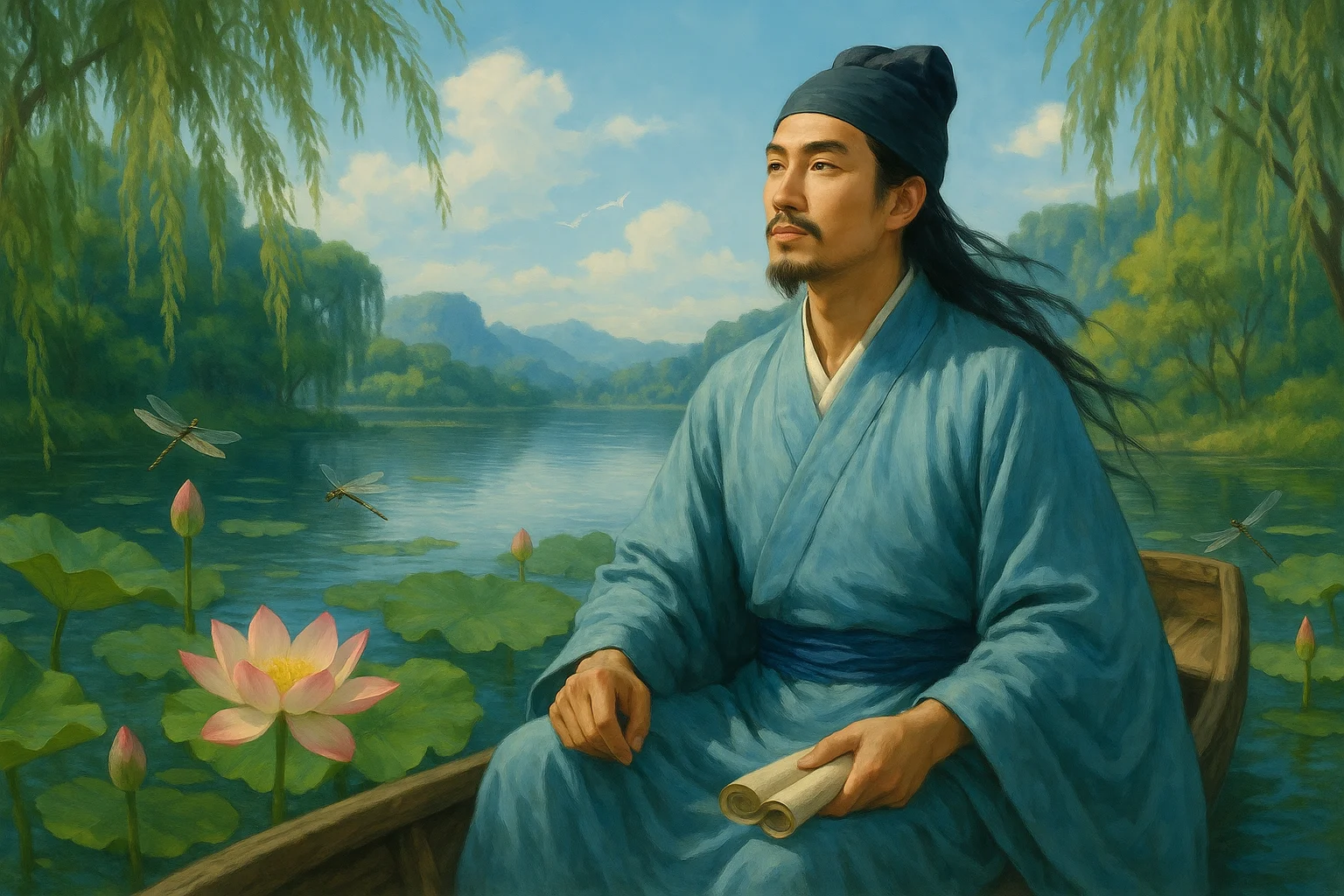
Yang Wanli (杨万里 1127 - 1206), a native of Jishui in Jiangxi, was a renowned poet of the Southern Song Dynasty, celebrated as one of the "Four Great Masters of the Restoration" alongside Lu You, Fan Chengda, and You Mao. He attained the jinshi degree in 1154 and rose to the position of Academician of the Baomo Pavilion. Breaking free from the constraints of the Jiangxi School of Poetry, he pioneered the lively and natural "Chengzhai Style," advocating for learning from nature and employing plain yet profound language. His poetry, often drawing inspiration from everyday life, profoundly influenced later schools of lyrical expression, particularly the Xingling (Spirit and Sensibility) School.






